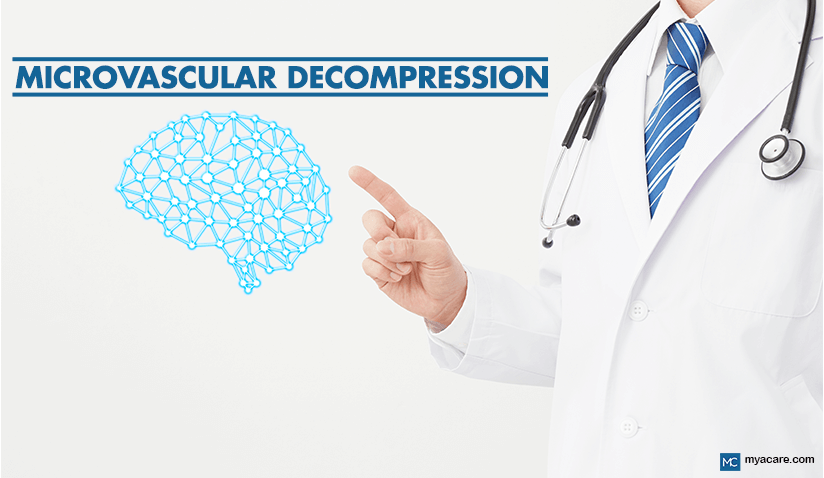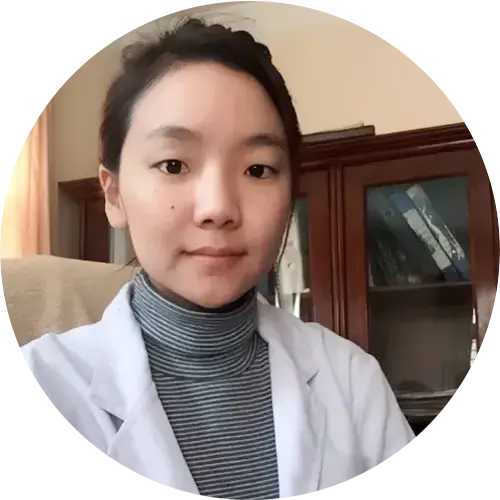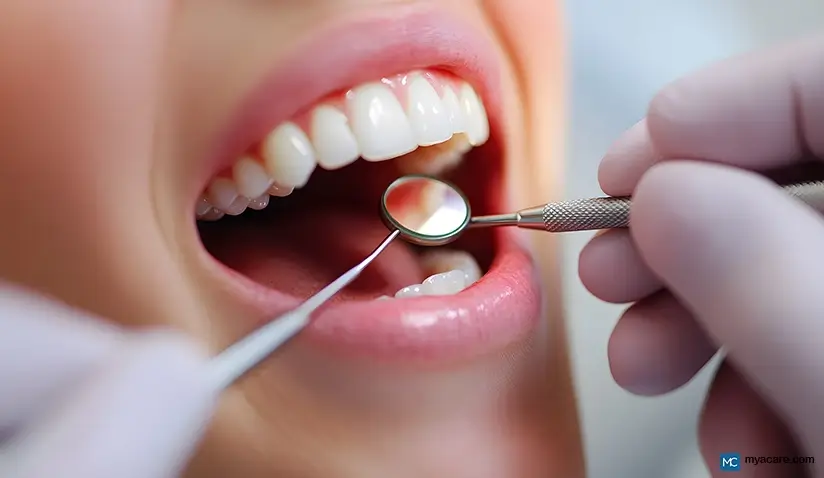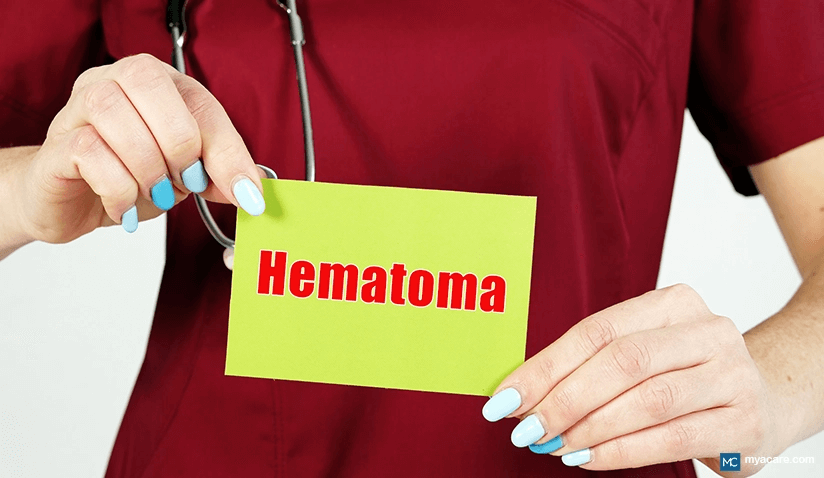Understanding Microvascular Decompression: Treating the Root of Nerve Pain

Medically Reviewed by Dr. Sony Sherpa, (MBBS)
Microvascular Decompression (MVD) is a surgical technique used to relieve nerve pain caused by the compression of cranial nerves. MVD directly addresses the root cause of conditions like trigeminal neuralgia, hemifacial spasms, and glossopharyngeal neuralgia. This surgery, which can be performed using either an open or minimally invasive approach, offers long-lasting relief, making it a preferred option for patients seeking to reduce pain and improve their quality of life without relying solely on medications.
In this article, we discuss how microvascular decompression works, the recovery process, success rates, alternatives, and potential risks and complications.
Understanding Cranial Nerve Disorders
Cranial nerves are a group of twelve paired nerves originating in the brain and brainstem that play a crucial role in transmitting sensory input and motor commands between the brain and the head, neck, and certain organs. These nerves control vital functions such as facial sensation, eye movement, hearing, balance, swallowing, and speech. When these nerves become damaged, compressed, or irritated - often due to aging blood vessels, tumors, trauma, or inflammation - it can result in a range of neurological symptoms, including pain, muscle weakness, or loss of function. One common cause of cranial nerve dysfunction is vascular compression, where an artery or vein presses against the nerve, disrupting its normal signaling.
Microvascular Decompression Procedure
The goal of microvascular decompression is to relieve pressure on cranial nerves caused by adjacent blood vessels. MVD is a form of brain surgery. It involves accessing the area where the cranial nerves emerge from the brainstem, requiring precision to avoid damaging delicate structures. By carefully repositioning the offending vessel and placing a protective barrier to prevent future contact, MVD helps alleviate nerve irritation and reduce symptoms such as severe facial pain or involuntary muscle spasms.
Conditions Commonly Treated with MVD
- Trigeminal Neuralgia (TN) – Characterized by sudden, severe facial pain triggered by everyday activities like speaking or chewing. It results from compression of the trigeminal nerve by an adjacent artery or vein.
- Hemifacial Spasm (HFS) – Involuntary twitching of facial muscles, typically affecting one side of the face, caused by compression of the facial nerve.
- Glossopharyngeal Neuralgia (GPN) – Sharp, stabbing pain in the throat, ear, and back of the tongue due to compression of the glossopharyngeal nerve.
- Other Conditions – MVD has also been used to treat certain cases of vestibular paroxysmia (inner ear dysfunction) and painful tic convulsif (co-occurrence of TN and HFS).
Criteria for Considering MVD
A consultation with a neurosurgeon specializing in MVD is essential to determine eligibility. Factors include:
- Evidence of vascular compression on MRI imaging.
- Failure or intolerance of medical treatments, such as anticonvulsants.
- Desire to avoid facial numbness, which can occur with alternative treatments like percutaneous stereotactic radiofrequency rhizotomy (PSR) or glycerol injection.
- Good overall health, with the ability to undergo general anesthesia and recover from surgery.
Who May Not Be a Candidate?
MVD may not be suitable for:
- Patients with Multiple Sclerosis (MS), where nerve damage (not vascular compression) causes pain.
- Individuals at risk of hearing loss, especially in cases involving the auditory nerve.
- Older patients (typically over 65 years) may have higher surgical risks, and less invasive options are often considered first. However, studies suggest that with careful selection, MVD can be performed safely in older adults, though the risk of complications may increase with age.
The Surgical Process
Before undergoing microvascular decompression, patients are thoroughly evaluated, including MRI imaging, to locate the compressed nerve and the offending blood vessel. Routine blood work and other preoperative tests are conducted to confirm that the patient is medically fit for surgery. The procedure is performed under general anesthesia, ensuring the patient remains unconscious and pain-free throughout.
- Surgical Approach
- The surgeon typically performs a retromastoid craniotomy or retrosigmoid craniectomy, creating a small opening behind the ear to access the brainstem.
- In some cases, a suboccipital craniectomy may be performed, especially if the compression is deeper or involves different cranial nerves.
- For enhanced visualization, endoscopic microvascular decompression may be used, involving a tiny camera for a magnified view.
- Identification of the Compressed Nerve
- Using a high-powered microscope or endoscope, the surgeon locates the affected cranial nerve and carefully identifies the blood vessel causing compression.
- Separation of the Blood Vessel from the Nerve
- The surgeon gently moves the blood vessel away from the nerve, creating space between them.
- Placement of a Teflon Pledget
- To prevent recurrence, a small cushion, usually a Teflon pledget, is placed between the nerve and the vessel. Other materials may be used depending on the patient’s needs.
- Intraoperative Monitoring
- Nerve function is closely monitored throughout the surgery to minimize the risk of damage and ensure the nerve remains intact.
- Closure and Post-Operative Care
- The opening in the skull is sealed, and the incision is closed with sutures.
- Patients are monitored in a recovery unit, with hospital stays typically lasting 2–5 days.
- Complete recovery may span several weeks, with a typical return to normal activities within 6 to 12 weeks post-procedure.
Procedure Length and Success Rate
Microvascular decompression typically takes 2–3 hours. Success rates vary by condition, with about 80–90% of patients experiencing long-term relief from symptoms.
Microvascular Decompression Scar
The surgical scar is usually about 2–3 inches long, hidden behind the ear. Over time, it fades and becomes less noticeable.
What is Macrovascular Decompression?
In rare cases, a larger blood vessel (e.g., the vertebral artery) may be the source of compression, requiring additional techniques to reposition or protect the nerve.
Recovery and Post-Operative Care
Immediate Post-Operative Care
- Headaches and Pain Management
- Headaches are common after MVD due to the surgical access through the skull and manipulation of tissues. Pain is usually managed with prescription pain relievers, and symptoms gradually improve over days to weeks.
- Wound Care
- The surgical incision behind the ear should be kept clean and dry. Patients are usually instructed to avoid submerging the area in water and to follow any dressing change instructions provided by the surgical team.
- Monitoring for Complications
- Patients are closely observed for signs of infection, cerebrospinal fluid (CSF) leaks, or changes in neurological function.
- Recovery Time
- Most patients stay in the hospital for 2 to 5 days after surgery.
- Initial recovery takes about 2 to 6 weeks, with most people resuming light activities within that time. Fatigue and mild discomfort can persist for a few months, and full recovery of normal sensation may require several months.
Long-Term Recovery
- Gradual Return to Normal Activities
- Patients can gradually increase physical activity after a few weeks but should avoid strenuous activities like heavy lifting or intense exercise for about 6 to 12 weeks.
- Follow-Up Appointments
- Regular follow-ups with the neurosurgeon ensure proper healing and monitor for symptom recurrence. Imaging may be done to assess the surgical site.
- Potential for Residual Symptoms
- Some patients may experience lingering mild symptoms, such as occasional facial tingling or twitching. In most cases, these symptoms improve over time.
When to Call a Doctor
Contact your healthcare provider promptly if you develop a fever, worsening pain, swelling, or redness around the incision site, severe headaches, changes in vision, muscle weakness, or difficulty speaking.
What Not to Do After MVD Surgery
- Avoid heavy lifting, bending, or straining for at least 6 weeks.
- Refrain from driving until cleared by the doctor, typically 2 to 4 weeks post-surgery.
- Minimize sudden head movements and avoid sleeping on the side of the incision during early recovery.
Potential Complications and Risks
- Surgical Risks and Infection
- Like all surgical procedures, there is a risk of incision site or intracranial infection. Antibiotics are usually given to reduce this risk.
- Cerebrospinal Fluid (CSF) Leak
- Rarely, the protective membrane around the brain can leak CSF, causing headaches or a clear fluid discharge from the nose or incision site.
- Hearing Loss
- Depending on the proximity of the auditory nerve, some patients may experience partial or complete hearing loss in the operated ear.
- Facial Weakness
- Temporary facial weakness or numbness can occur due to manipulation of the facial nerve. Permanent weakness is rare.
- Stroke (Rare)
- There is a very small risk of stroke due to blood vessel manipulation during surgery.
- Teflon Granuloma
- In rare cases, the Teflon material used to cushion the nerve can trigger an inflammatory reaction, forming a granuloma that may require further treatment.
- Vertigo and Tinnitus
- Some patients report dizziness (vertigo) or ringing in the ears (tinnitus) post-surgery, though these often improve over time.
- Potential for Recurrence
- Although MVD is highly effective, symptoms can recur. Studies show that 5-20% of patients experience recurrence of spasms or pain within 5 to 10 years. Recurrence may result from scar tissue formation, displacement of the Teflon pledget, or compression by another vessel.
Benefits of Microvascular Decompression
- High Success Rate
- MVD has one of the highest success rates among treatment options, with long-term relief achieved in 80–90% of patients suffering from conditions like trigeminal neuralgia or hemifacial spasms.
- Long-Term Relief
- Unlike other treatments that may only offer temporary relief, MVD addresses the root cause - vascular compression - providing lasting results for many patients.
- Preservation of Nerve Function
- MVD avoids damaging the nerve, preserving normal sensation and function. This makes it ideal for patients seeking pain relief without the risk of permanent facial numbness.
Alternatives to MVD
When MVD isn’t suitable, such as for older patients, those with multiple health conditions, or when surgical risks are high, other treatments may be considered. Each option varies in terms of invasiveness, effectiveness, and potential side effects. The table below compares these alternatives.
| Treatment | Invasiveness | Pain Relief Duration | Risk of Numbness | Best For |
|---|---|---|---|---|
| Microvascular Decompression (MVD) | Varies by technique | Long-term | Minimal | Younger, healthier patients seeking long-term relief with preserved nerve function. |
| Medications (e.g., anticonvulsants, muscle relaxants) | None | Temporary (Requires ongoing use) | None | First-line treatment, especially for mild cases or those not ready for surgery. |
| Stereotactic Radiosurgery (Gamma Knife) | Minimally Invasive | Moderate (50–75% long-term relief) | Moderate | Patients unable to undergo surgery; offers good pain relief with minimal recovery time. |
| Radiofrequency Ablation (RFA) | Minimally Invasive | Temporary (1–3 years) | High | Patients needing quick relief who can tolerate some facial numbness. |
| Glycerol Injection | Minimally Invasive | Temporary (6 months to 2 years) | High | Older patients or those unable to undergo more invasive procedures. |
| Balloon Compression | Minimally Invasive | Temporary (1–2 years) | High | Patients with recurrent pain who prefer repeatable, low-risk procedures. |
| Nerve Blocks | Minimally Invasive | Short-term (Weeks to Months) | None | Temporary pain control or diagnostic purposes. |
| Botulinum Toxin Injections (Botox) | Minimally Invasive | Short-term (3–6 months) | None | Hemifacial spasm or cases where other treatments are unsuitable. |
Research and Advancements
- Minimally Invasive Techniques
Ongoing research is exploring less invasive approaches to microvascular decompression involving smaller incisions, refined surgical tools, and endoscopic techniques. These methods aim to reduce recovery time, minimize surgical trauma, and lower complications while maintaining high success rates.
- Advancements in Imaging and Surgical Technology
- High-Resolution Imaging: Improved MRI techniques, like 3D FIESTA (Fast Imaging Employing Steady-State Acquisition), offer clearer visualization of nerve-vessel conflicts, enhancing surgical planning and precision.
- Intraoperative Monitoring: Advances in neuromonitoring help surgeons track nerve function during the procedure, reducing the risk of accidental nerve damage.
- Robotic-Assisted MVD
Robotic technology is beginning to play a role in MVD procedures, providing greater precision, stability, and control. Robotic arms can maneuver in tighter spaces, potentially making the procedure safer and more effective.
- Gene Therapies and Emerging Treatments
Researchers are investigating gene therapy as a future treatment for cranial nerve disorders like trigeminal neuralgia and glossopharyngeal neuralgia. This approach targets the molecular mechanisms behind nerve pain, offering a potential long-term solution without the need for invasive procedures.
To search for the best Neurology healthcare providers in Azerbaijan, Germany, India, Malaysia, Spain, Thailand, Turkey, UAE, and the UK, please use the Mya Care search engine.
To search for the best Doctors and Healthcare Providers worldwide, please use the Mya Care search engine.
The Mya Care Editorial Team comprises medical doctors and qualified professionals with a background in healthcare, dedicated to delivering trustworthy, evidence-based health content.
Our team draws on authoritative sources, including systematic reviews published in top-tier medical journals, the latest academic and professional books by renowned experts, and official guidelines from authoritative global health organizations. This rigorous process ensures every article reflects current medical standards and is regularly updated to include the latest healthcare insights.

Dr. Sony Sherpa completed her MBBS at Guangzhou Medical University, China. She is a resident doctor, researcher, and medical writer who believes in the importance of accessible, quality healthcare for everyone. Her work in the healthcare field is focused on improving the well-being of individuals and communities, ensuring they receive the necessary care and support for a healthy and fulfilling life.
References:
Featured Blogs



